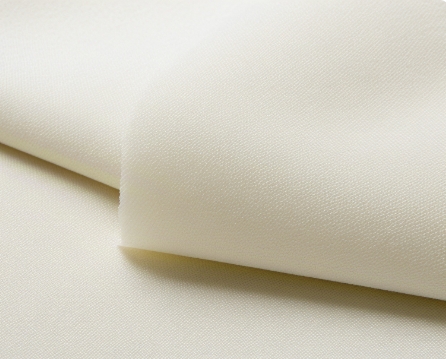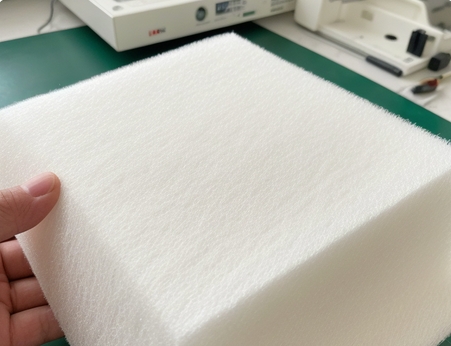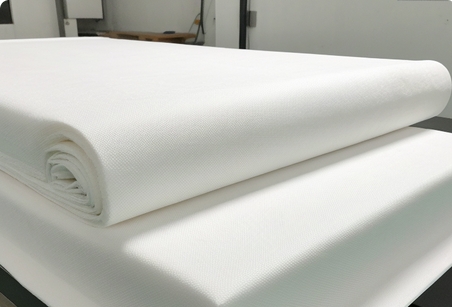Language

As the core consumable in the field of precision cleaning, dust-free cloth plays a key role in semiconductor manufacturing, optical instrument maintenance, and biological laboratories. The surface texture design directly affects the performance of the material. Currently, mainstream products are mainly divided into two knitted structures: straight and mesh. The dust-free cloth of these two textures shows significant differences in the microstructure, which leads to completely different application characteristics.
From the analysis of surface morphology, the straight-grain dust-free cloth adopts longitudinal plain weaving process to form a uniform parallel linear structure. This design gives it a silk-like smooth touch, especially suitable for scenarios with nonlevel cleanliness requirements. For example, during the cleaning process of semiconductor wafers, the particle retention rate of the straight-grain dust-free cloth below 0.3 μm can reach 98.7%. In contrast, the mesh dust-free cloth forms a diamond grid through warp and weft interweaving, and the surface presents a micro-concave and convex structure of 0.1-0.3mm, which is similar to the physical properties of microscopic sandpaper, making it excellent in removing cured glue stains.
In the cleaning efficiency dimension, the advantages of straight-grain structure are reflected in three aspects: first, its linear arrangement of fibers can reduce the friction coefficient with the cleaned surface, and experimental data show that the probability of scratching on the mirror polished metal is reduced by 63%; second, the capillary effect formed by the unidirectional fiber bundle increases the liquid absorption speed to 3.8 ml/s, far exceeding the 2.1 ml/s of the mesh fabric; further, its homogenized surface structure can achieve a traceless rate of 99.9% when wiping the liquid crystal screen. With its three-dimensional texture, the cleaning efficiency of mesh fabrics is 42% higher than that of straight-grained fabrics when removing stubborn oil stains from mechanical parts.
Differentiated selection of application scenarios must follow the principle of material matching. With its characteristics, straight-textured dust-free cloth has become a standard configuration in high-end fields such as lithography lens maintenance and medical catheterDust-free cloth cleaning. Actual testing by a well-known fab shows that the use of straight-textured dust-free cloth can extend the equipment downtime maintenance cycle by 30%. Mesh dust-free cloth is more suitable for industrial scenarios such as injection mold cleaning and carbon removal of automobile engine components. Its grid structure can effectively carry metal debris above 0.5mm.
From the perspective of material engineering, the straight-grain weaving process has more stringent requirements on fiber raw materials. At present, industry leaders mostly use 0.08 denier microfiber with straight-grain structure, which can make dust-free cloth meet the ISO Class 1 cleanliness standard. Due to its cost advantage, conventional polyester mesh fabrics are still the first choice in the general industrial cleaning market. It is worth noting that the wear resistance index of the straight-grained structure reaches 1.7 times that of the mesh fabric, which means that its service life can be extended by more than 50% under the same working conditions.
In the field of industrial cleaning, the choice of straight and mesh dust-free cloth directly affects the cleaning efficiency and equipment maintenance costs. Professional engineers usually judge based on surface characteristics and contaminant type: straight-grain dust-free cloth can achieve mirror-level polishing of precision instruments with its parallel fiber structure (fiber density up to 200g/m²), and the friction coefficient is stable below 0.15. It is typically used in semiconductor wafer production lines and optical lens cleaning scenarios.
In contrast, the three-dimensional clean grid formed by the cross-woven process (porosity about 35%) is formed by the mesh dust-free cloth. Its enhanced mechanical adhesion can effectively remove residual metal debris and stubborn oil stains from mechanical processing, showing significant advantages in the assembly workshop of automobile engines and mold maintenance.
According to the ISO 14644-1 clean room standard verification, the fiber extension characteristics of the straight-grain structure make it form a one-way cleaning trajectory during wiping movement, which is particularly suitable for ITO conductive film dust removal operations in flat display manufacturing. The cross-friction field of the mesh design can break through the surface tension limit, and the removal rate of biofilm residues is increased to 92.6% during sterilization of medical devices.
Tags:
RELATED RESOURCES

How to choose ultra-fine dust-free cloth? Full analysis of 4009 and 4008 models
Analysis of the technology of ultra-fine and ultra-fine dust-free cloth: core differences between 4008 and 400......
More

Microfiber Clean room Wipes Application Guide: Biopharmaceutical/Fab Cleaning Solutions.
As the core consumable in the field of precision cleaning, the microfiber dust-free cloth is precisely woven b......
More

How to clean room with industrial dust-free cloth?
Guide to operating specifications for professional clean environment surface cleaningIn controlled environment......
More

Analysis of multi-functional wipe cloth technology: 5 major advantages to improve industrial cleanin
Revolutionary materials in the field of industrial cleaning: Analysis of multifunctional wipe cloth technology......
More
Related Products
Room 101, Building 1, Angeer Factory, No.4, Hetian Road, Shatian Community, Kengzi street, Pingshan District, Shenzhen, Guangdong, P.R. China 518122
info@wipestar.com
+86-755-89616775
+86-755-89616773
Related Products
RELATED RESOURCES

How to choose ultra-fine dust-free cloth? Full analysis of 4009 and 4008 models
Analysis of the technology of ultra-fine and ultra-fine dust-free cloth: core differences between 4008 and 400.........
More

Microfiber Clean room Wipes Application Guide: Biopharmaceutical/Fab Cleaning Solutions.
As the core consumable in the field of precision cleaning, the microfiber dust-free cloth is precisely woven b.........
More
WIPESTAR
微信官方公众号